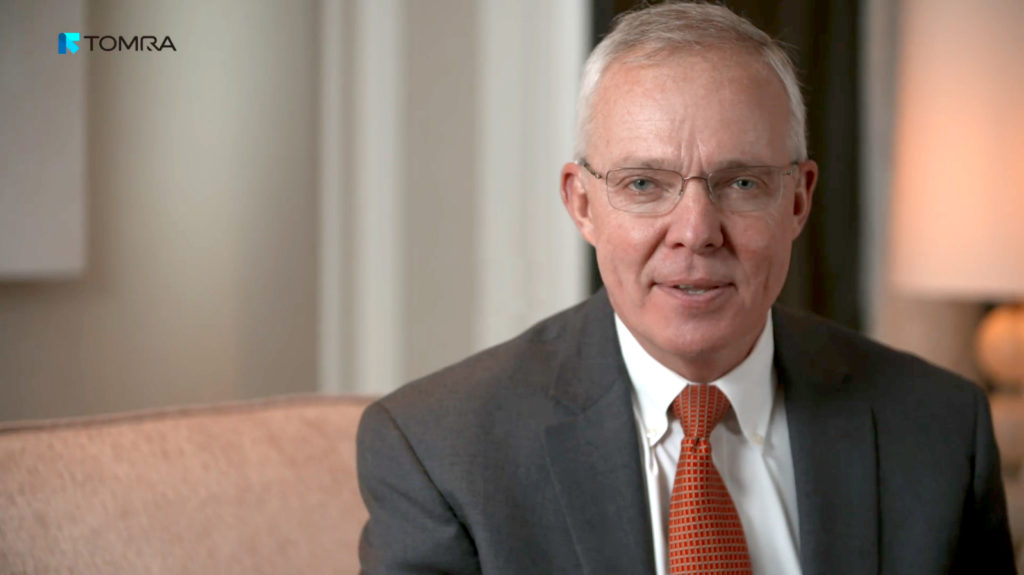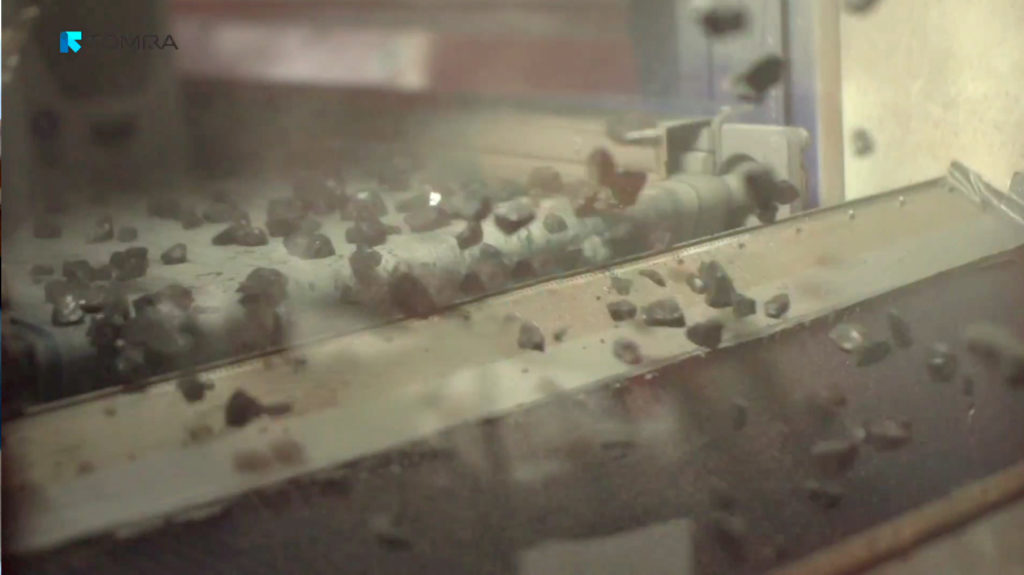Vista Gold has turned to TOMRA Sorting Mining’s ore sorting technology to reignite the Mt Todd gold project, in the Northern Territory of Australia.
Mt Todd, which was acquired in 2006, hosts one of the country’s biggest undeveloped gold resources. A recently completed prefeasibility study outlined a 50,000 t/d operation producing 413,400 oz/y of gold over the 13-year mine life at Mt Todd, with average all-in sustaining costs of $746/oz.
Mt Todd briefly operated in the 1990s, but is known for having hard ore that can prove tricky when finding an efficient processing route.
Fred Earnest (pictured below), President and CEO of Vista Gold, said: “We had a desire to find a way to only be spending money to process the rock that had gold in it. We started looking for ways that we could get rid of the non-mineralised host rock prior to the grinding circuit.”
The company looked at different technologies to address the issues at Mt Todd and contacted TOMRA to find out about its sensor-based sorting technology, Earnest said.
TOMRA invited the Vista Gold team to visit its testing facility in Germany with a sample from the project to see first-hand what could be achieved, TOMRA said.
The test was an eye opener for Fred Earnest, according to the technology company: “In every evaluation of new technology, we have ‘aha moments’. For us it was the day we were at the facility in Germany watching our rock be sorted on a production-scale machine. When we saw how fast it was happening, when we saw the product sorted and rejected, and when we were able to pick it up and look at it – we realised that this was not just a dream, this was real technology being applied at a production rate to our rock.
“All of a sudden, we realised that this was technology that would work for us at Mt Todd and that we needed to evaluate more seriously.”
Following extensive testing, Vista Gold has integrated TOMRA’s two-stage sorting solution in its planned flowsheet at Mt Todd: the system sorts 20 t/h, using X-ray Transmission (XRT) technology to remove particles containing sulphide minerals and subsequently lasers to remove particles containing quartz and calcite.

The benefits of TOMRA’s solution to the Mt Todd project are two-fold, according to the company.
On the one hand, operating costs have been reduced: “We’re getting rid of material and we’re not spending money grinding rock that has no value,” Earnest explains. On the other hand, gold recovery has improved: “We’ve been able to make design changes in the plant. Because we’re processing less material, we’re now able to do a finer size. With finer grind, our gold recovery has gone up. This has resulted in improvements of grade by 10%. Our feed grade to the mill has gone up from 0.84 g/t to now 0.91g/t.”
What’s more, the savings in operating costs have paid for the improvements to the plant, according to TOMRA.
Earnest said: “We’ve been able to achieve all of this on a capital-neutral basis. We’ve been able to incorporate the equipment for the sorting to add fine grinding equipment, all with the money that we’ve saved from the ball mills.
“And, so ore sorting has opened up a whole new window of opportunity for us with the Mt Todd project. We’re very excited about what this technology means to the mining industry and specifically to our projects in the future. And we look forward to seeing this technology grow and become even more efficient and of greater value to us.”
TOMRA says it worked closely with Vista Gold’s team to identify the best solution for the Mt Todd project – from testing rock from the mine at its facility in Germany, to analysing the situation at the project and advising on how its sensor-based sorting technology could fit in its operation to deliver the best results.
Earnest added: “We have been thoroughly impressed with the team at TOMRA. We’ve done a number of tests with them, we’ve worked with them closely. The people at the [testing] facility in Germany have been very accommodating. We’ve been able to be there on the floor, watching the test, looking at the results, asking questions. It’s helped us immensely to have this open exchange with the team at TOMRA and we look forward to a very long relationship with them.”











